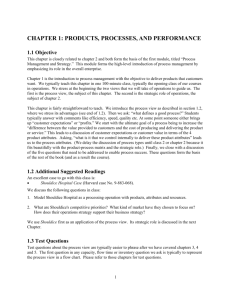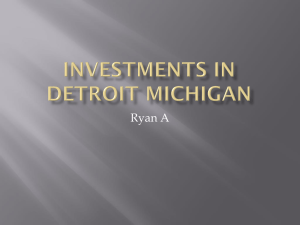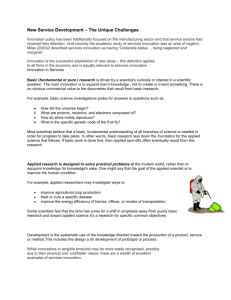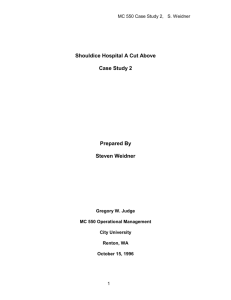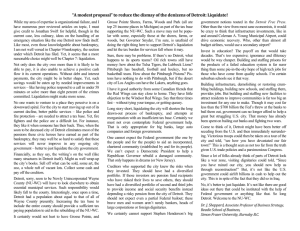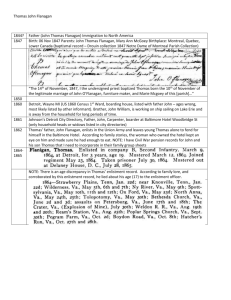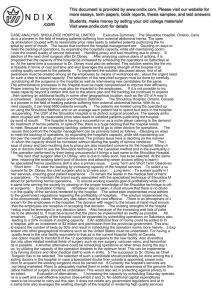Operations Strategy & Management: Strategic Fit & Focus
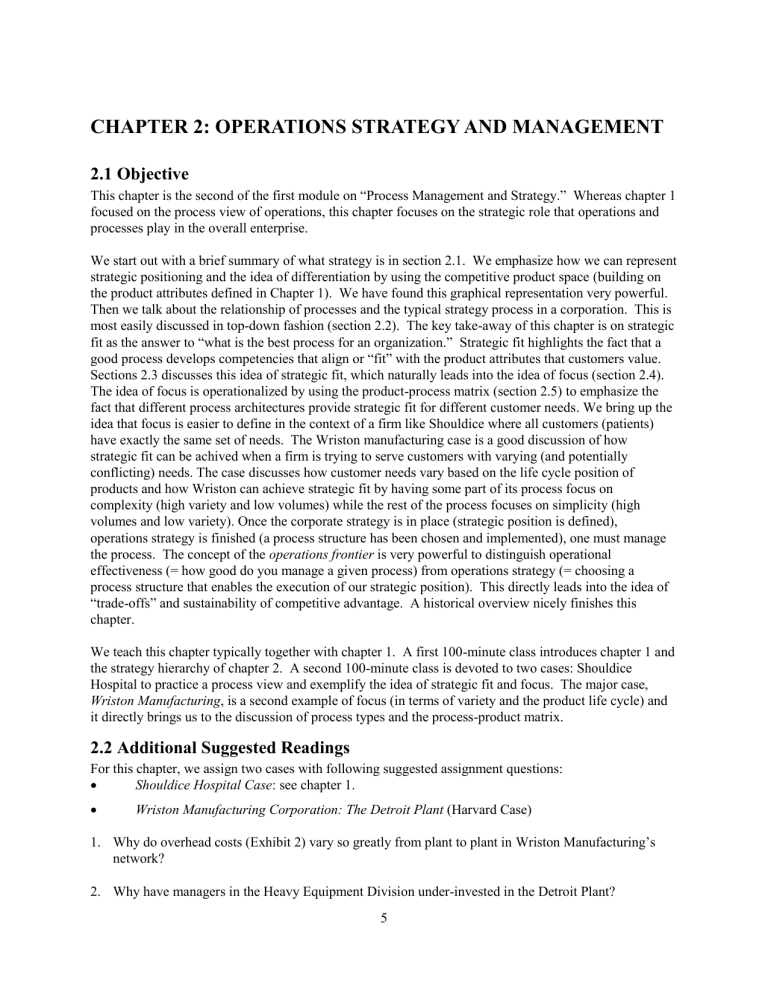
CHAPTER 2: OPERATIONS STRATEGY AND MANAGEMENT
2.1 Objective
This chapter is the second of the first module on “Process Management and Strategy.” Whereas chapter 1 focused on the process view of operations, this chapter focuses on the strategic role that operations and processes play in the overall enterprise.
We start out with a brief summary of what strategy is in section 2.1. We emphasize how we can represent strategic positioning and the idea of differentiation by using the competitive product space (building on the product attributes defined in Chapter 1). We have found this graphical representation very powerful.
Then we talk about the relationship of processes and the typical strategy process in a corporation. This is most easily discussed in top-down fashion (section 2.2). The key take-away of this chapter is on strategic fit as the answer to “what is the best process for an organization.” Strategic fit highlights the fact that a good process develops competencies that align or “fit” with the product attributes that customers value.
Sections 2.3 discusses this idea of strategic fit, which naturally leads into the idea of focus (section 2.4).
The idea of focus is operationalized by using the product-process matrix (section 2.5) to emphasize the fact that different process architectures provide strategic fit for different customer needs. We bring up the idea that focus is easier to define in the context of a firm like Shouldice where all customers (patients) have exactly the same set of needs. The Wriston manufacturing case is a good discussion of how strategic fit can be achived when a firm is trying to serve customers with varying (and potentially conflicting) needs. The case discusses how customer needs vary based on the life cycle position of products and how Wriston can achieve strategic fit by having some part of its process focus on complexity (high variety and low volumes) while the rest of the process focuses on simplicity (high volumes and low variety). Once the corporate strategy is in place (strategic position is defined), operations strategy is finished (a process structure has been chosen and implemented), one must manage the process. The concept of the operations frontier is very powerful to distinguish operational effectiveness (= how good do you manage a given process) from operations strategy (= choosing a process structure that enables the execution of our strategic position). This directly leads into the idea of
“trade-offs” and sustainability of competitive advantage. A historical overview nicely finishes this chapter.
We teach this chapter typically together with chapter 1. A first 100-minute class introduces chapter 1 and the strategy hierarchy of chapter 2. A second 100-minute class is devoted to two cases: Shouldice
Hospital to practice a process view and exemplify the idea of strategic fit and focus. The major case,
Wriston Manufacturing , is a second example of focus (in terms of variety and the product life cycle) and it directly brings us to the discussion of process types and the process-product matrix.
2.2 Additional Suggested Readings
For this chapter, we assign two cases with following suggested assignment questions:
Shouldice Hospital Case : see chapter 1.
Wriston Manufacturing Corporation: The Detroit Plant (Harvard Case)
1.
Why do overhead costs (Exhibit 2) vary so greatly from plant to plant in Wriston Manufacturing’s network?
2.
Why have managers in the Heavy Equipment Division under-invested in the Detroit Plant?
5
6 Chapter 2
3.
What do your recommend should be done with the Detroit Plant? Justify your recommendation.
2.3 Test Questions
2.3.1 Wriston Manufacturing Corporation operates several plants with large differences in overhead rates. The Detroit plant has the highest overhead rate—more than twice the rate of the lowest overhead plant, Maysville. As a result, the corporation is considering closing down Detroit and transferring its production to a lower overhead facility such as Maysville.
What will be the effect of transferring the entire production of Detroit to Maysville and why?
(Assume capacity is not an issue)
We know that overhead burden rates are driven (1) favorably by scale economies (i.e. volume) and (2) unfavorably by complexity (i.e. set-ups,..)
Transferring to Maysville will hardly impact volume but seriously impact complexity. As a consequence, overheads at Maysville will increase.
Because of Detroit’s focus on complexity and Maysville focus on volume, the deterioration of
Maysville overhead will be worse than the gain at Detroit.
2.3.2 Sustaining competitive advantage requires strategic positioning and operational effectiveness .
Define both concepts and graphically illustrate their difference using the competitive space graph.
Strategic positioning = from a firm's current position, defining a relative ranking/importance of the competitive priorities (p, t, var, Q) that the company should focus on. This defines a direction for evolution (improvement) in the competitive space (dotted line)
Operational effectiveness = being excellent at what you do = have a current position on the current frontier.
Illustrate: quality
Cost efficiency
Chapter 2 7
2.3.3 The Lancaster &York Distribution Company is a regional, full line, distributor of parts, tools and supplies used by maintenance personnel. The company maintains a catalogue of 75,000 odd active SKUs (items). Orders are taken over the phone and shipped by UPS out of the warehouse within a day. The company carries a full line of products—everything a maintenance operation may require. Its motto is: ”Everything you need for maintenance is only a phone call away— within a day."
The company considers the individual maintenance supervisor, rather than the corporate purchasing department, as its customer. L & Y’s prices are relatively high—you can get almost anything they sell as much as 30% lower if you shopped around. They do not give any discounts from published list price. Their largest customer accounts for less than one tenth of one percent of their total business. L & Y has not been certified as a preferred supplier by any of its customers and it typically is not the primary supplier of a given item to a given company. The typical order is for two to six items, at a combined order value of $20 to $350. Many orders involve either an emergency situation where a particular item is needed right away, or a small $value order where the major factor is the convenience of the maintenance supervisor who can get a complete order taken care of by just one telephone call.
The annual volume of an average item carried by L&Y is about 200 units, with some slow moving items selling as few as 10 units a year. The company enjoys a superior reputation for service, product quality and delivery (99% of all orders are sent complete within a day). The company has been consistently very profitable, but growth has been modest. The company is privately held.
L & Y has been approached by the purchasing department of a large industrial customer suggesting L & Y becomes their sole supplier for maintenance products. This would increase the sales volume to this single customer by more than one hundred fold. It would also result in a noticeable increase in the predictability of demand for many of the items carried by L & Y. In return, the customer requests an immediate 25% discount from list prices, and significant financial penalties for late shipments by L&Y.
Because of your expertise in managing operations, the CEO of L & Y is seeking your advice:
Should L & Y accept the offer? Why? Present your answer (together with any assumptions you deem necessary) in 50 words or less in the area below .
Current strategy emphasizes quality, time and flexibility. L&Y profitably serves this market segment with its current process. The proposal requires a complete inversion of the strategy to emphasize price and high volume. The process does not have the capabilities to serve both segments well (loss of fit)
decline. [49 words]
If you did suggest to go ahead : If a strategic decision is made to enter this market segment, the needs perhaps are best served by a “plant-within-plant” concept and develop distinct capabilities to serve the two segments.
8 Chapter 2
2.3.4 As a product moves through its life cycle from introduction to growth to maturity and phase out, which process type (job shop, batch, line flow or continuous flow) is most appropriate at each stage?
At the start of a product’s life cycle it may be best manufactured in job shop setting since product design has not yet standardized and flexibility is a key attribute desired from the production process. As a product matures it may be better produced in a line flow setting since volumes are high and there are few design changes. The focus here will be on lower costs that will be best achieved in a line flow setting. As a product is phased out volumes decline and it may be better to return it to a job shop setting.
2.3.5 Argue why Shouldice Hospital runs an effective operation. Would it be appropriate for a hospital emergency room to be structured like Shouldice? Why?
Shouldice is effective because they have a perfect fit between strategy (they focus on a very narrow product segment) and structure. Their focus allows them to design a structure that perfectly supports this.
This structure would not be appropriate for an ER. since ER’s have a different mission (time critical and variety). The Shouldice structure is ideal to support quality, cost and near zero variety.
2.3.6 Give two major benefits of a functional (process focus) layout and two major benefits of a cell
(product focus) layout.
Functional:
Efficiencies from the specialization and division of labor.
Utilization of resources and consequently lower investment (no duplication necessary).
Better technological learning.
Cell:
Faster and less waste (no hand-offs nor WIP).
Better product learning.
Better visibility and hence easier to manage (almost self managing).
2.3.7 Two companies A and B have invested in expensive flexible manufacturing systems that allow the changeover time between products to be reduced to seconds. The annual reports of the two companies contain the following information:
Number of products sold
Firm A
20
Firm B
2,000
Average sales volume per product
Number of new products introduced in past year
17,000
2
170
200
Chapter 2 9
Circle the statement you most agree with:
Firm A has a strong strategic fit between its product output and process structure
Firm B has a strong strategic fit between its product output and process structure
Both firms A and B have a strong strategic fit between product output and process structure
Neither of the firms A and B have a strong strategic fit between product output and process structure
